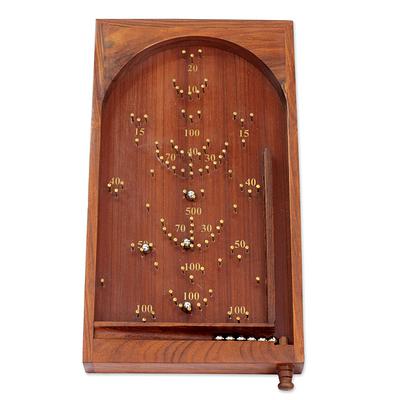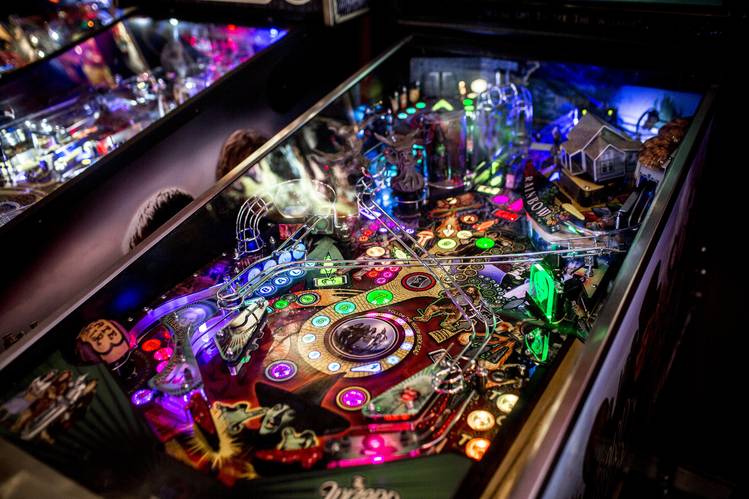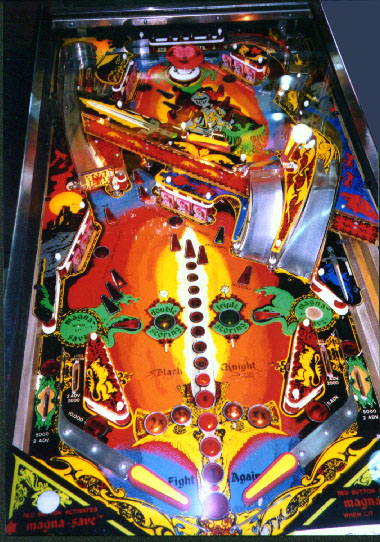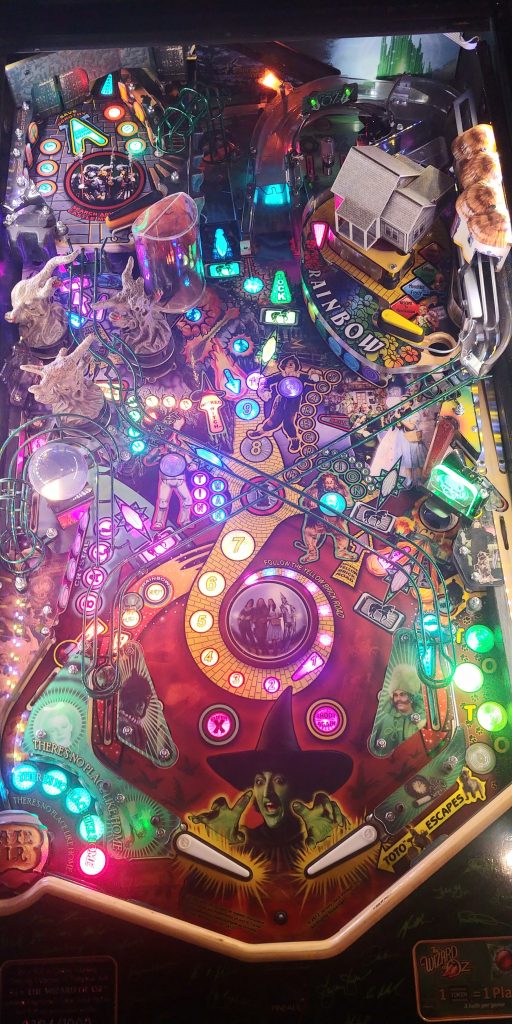Pins to Bumpers
Pinball, as we know it today, has gone through several different revisions to its mechanics over the decades. The first step towards the modern version of pinball roughly starts with bagatelle.

Bagatelle used to be played with pool balls and cue sticks, where players would try and hit the ball into pins. But around the 1870s, the game had been “improved” with the inclusion of the coiled spring plunger for shooting balls onto the now inclined playing field. This allowed the game to become scaled-down from its previous version and start its progress towards the pinball we know today.
The next step from there was the replacing of the pins with bumpers.

It wasn’t too much of a change, but it was enough to nudge how the game originally played out and turned it into a more lively game to play.
These initial changes were interesting to me as one could argue if these didn’t happen, pinball would probably not exist today as we know it. Not only that, it became the initial standards for future machines that would, in turn, pave the way to modern pinball machines.
Flippers
After technological advances, and the necessary upgrades being introduced to pinball machines, the next improvement made to the game was the inclusion of flippers; first seen with Gottlieb’s Humpty Dumpty.

This is when pinball machines start to look a lot more familiar with their modern counterparts rather than their older ones. The addition of flippers allowed the game to last longer and players to rack up more points and aim for higher high scores than previous revisions of pinball.
As someone who appreciates games that require skill to play, including but not limited to pinball, the older pinball machines, such as Humpty Dumpty, were something of a retro treat. Modern pinball machines require skill in their own right, but older pinball machines are difficult in a different sense.
Compared to their modern counterparts, the older machines were very simplistic at heart. But the simplicity didn’t take away from its inherent difficulty or mastery over the game that was required. Perhaps it’s difficult precisely due to its simplicity.
And simple but difficult games are something I really appreciate as having grown up on mostly digital games as opposed to analog games.
Modern “Mechanics”
After the addition of flippers, pinball was pretty much a completed product. After that, it was a matter of how manufacturers/developers wanted to implement additional mechanics of their choices.

They could throw in crazy trick shots that required immense precision, hidden puzzles that can only be activated after certain steps had been fulfilled, or the multiball mechanic that brought chaos to the playing field.

Manufacturers also started making the playing field multi-layered with ramps leading up to the second level with additional features and sometimes even another set of flippers.
Modern pinball machines definitely have several additional layers of complicated features when compared to older machines, but that’s just what adds to the charm to pinball machines.
Sometimes I feel like being overwhelmed by all the implicit rules that are in place, but it definitely feels good to learn them one by one and get better at a specific machine.
In the end. . .
Pinball has come a long way since the 19th Century and it has more or less stayed on the path to turning out to become what it is today instead of anything else.
I for one appreciate how Pinball has turned out over time and I’m pretty sure others do too.




